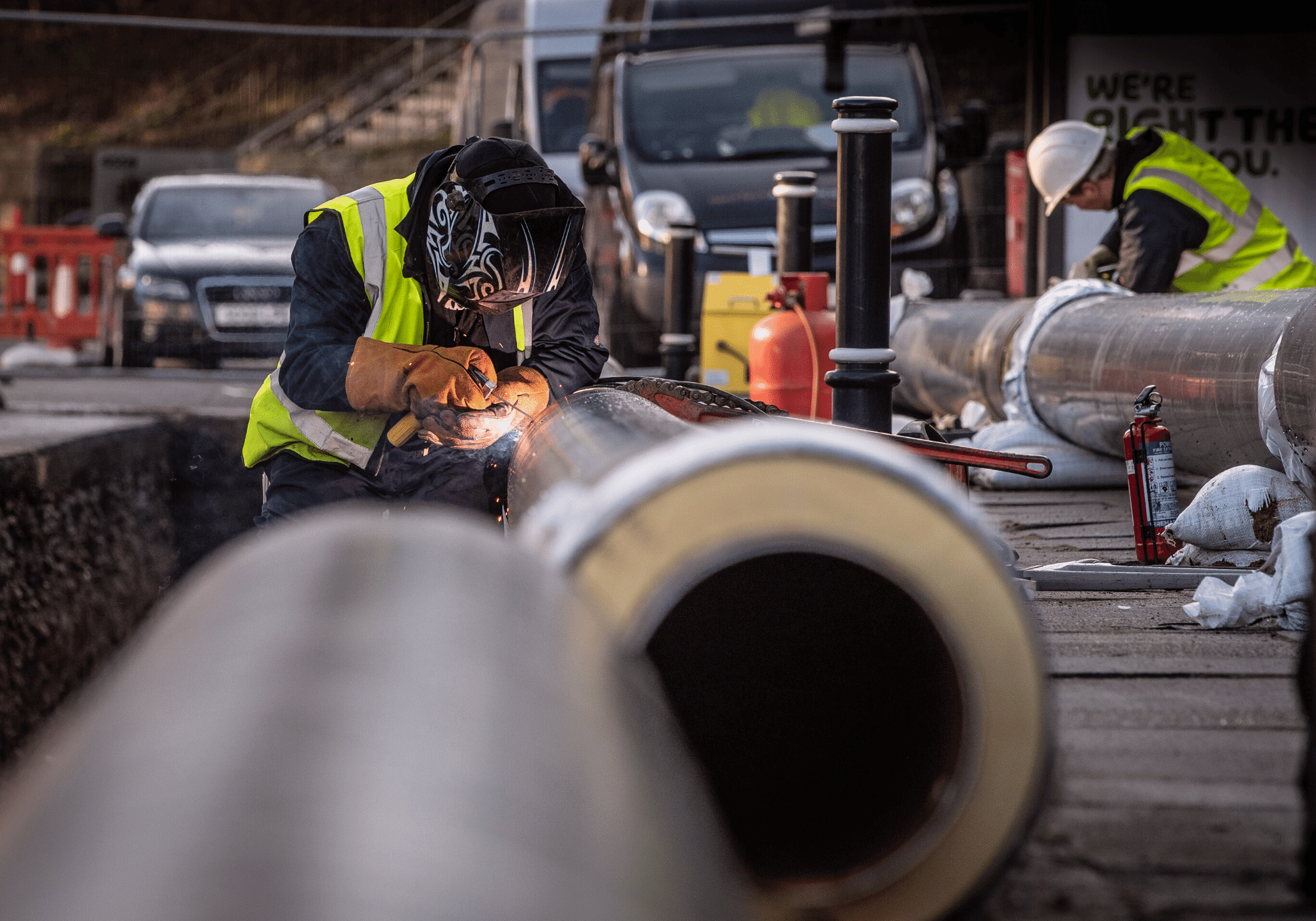District Heat Networks
NESCAN Hub
#Buildings & Energy
Publish Date: March 2024
Last Updated: March 2024
District Heating uses a delivery network to distribute heat generated at a central location to individual premises for space and water heating.
This concept dates from antiquity and is considered lower carbon than individual gas boilers. At a basic level, a network requires the delivery of hot water through one pipe system, and the return of cold water to the energy source through another, which means there’s almost unlimited potential to scale up with additional sources of energy generation.
The network allows for a degree of future proofing as new technologies emerge. Once the pipes are laid, changes to more renewable or energy efficient processes can be made at either end. This could be transitioning to lower carbon or renewable energy at the source, or more efficient buildings to reduce the heating demand, or more optimistically, both.
There are already over 17,000 heat networks in place in the UK, and nearly half a million connections to them, most of which are domestic customers. They work well in dense urban areas and have been cited as a way of tackling fuel poverty while also reducing housing management costs.
The establishment of heat networks, which can vary enormously in size, means that cheaper, lower carbon sources of heat generation can be added over time without additional, later upheaval such as digging up roads, or making changes in people’s homes.
Community heating is about supplying heat to a relatively small development of one or perhaps two buildings with multiple dwellings, such as a multi storey block or sheltered housing complex. District heating has wider objectives: distributing large-scale sources of heat over a large area and connecting multiple buildings in a heat network. Both community and district heating can be described as heat networks.
Copenhagen meets 98% of its heating needs through heat networks and aims to be the world’s first carbon neutral capital by 2025. This has involved long term planning and investment. In the 1990s, the city started replacing the original steam-based district heating network with more energy-efficient, water-based district. They also have a District Cooling System whereby companies can achieve cost savings of up to 40% and reduce their CO2 emissions by up to 70% by switching from conventional air conditioning to district cooling.
Aberdeen Heat and Power is cited as a great example of just how district heating networks can increase in scope over time. There are plans to join up multiple energy centres in the city to create a much larger heat network, connecting many more customers along the way – including householders, local businesses and public buildings.
Garioch District Heat is a community-led project to install district heating in the Garioch region. Starting with the towns of Inverurie, Port Elphinstone and Kintore, the plan is to build a modern district heating scheme that delivers hot water to homes and businesses via an underground network of pipes. A Community Benefit Society, Inverurie Community Energy Society Ltd, has been established to accept the offer of free heat from the Thainstone Waste plant at Kirkwood Industrial Park. As the project depends on using residual heat from the energy plant, which is estimated to become operational in 2025, the heat network will be developed in stages over several years. The initial efforts will concentrate on delivering the core loop network around Inverurie to supply the commercial, industrial and institutional customers. This is known the ‘Anchor load’ and will provide the financial viability to attract the investment that will be required to develop further stages.
If you would like to read in more depth about heat networks, try this report from the Association for Decentralised Energy: Market Report: Heat Networks in the UK January 2018
Funding
The Energy Savings Trust has been running the District Heating Loan Fund on behalf of Scottish Government since 2011. This offers low-interest unsecured loans with repayment terms of 10-15 years. Since the fund’s inception, 50 different projects across Scotland have been awarded £15 million in funding.
The Heat Network Partnership aims to stimulate investment in capacity-building schemes through collaboration between different agencies.
The Low-Carbon Infrastructure Transition Programme, offers support for large-scale projects that help to meet government decarbonisation objectives.

